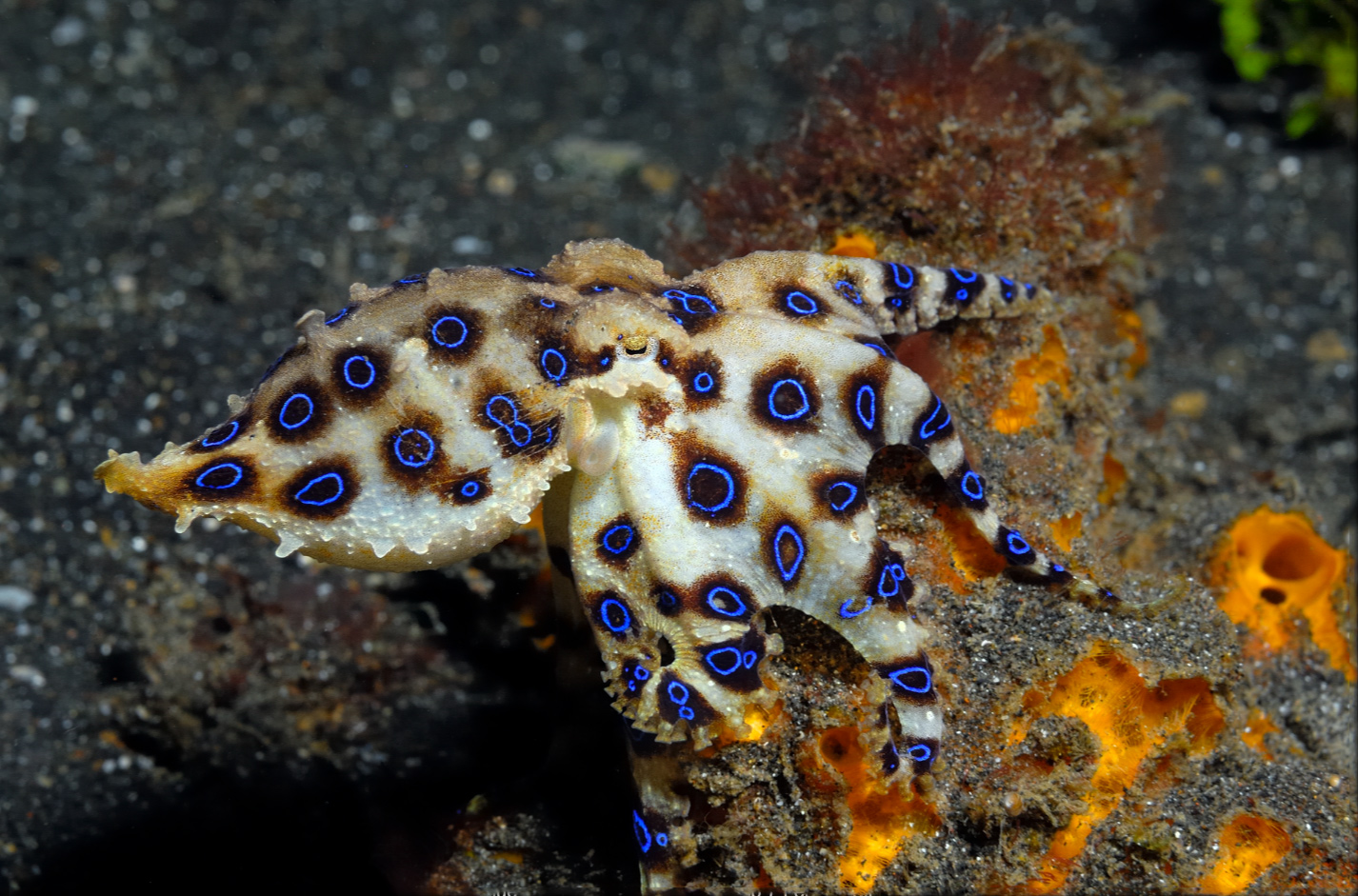Blue-ringed Octopus
Genus Hapalochlaena
Author: Marco Joly
Photos by Barbara Moll
Characteristics: The Blue-ringed octopus is one of the smallest octopi, with a body length of up to 5 cm and arms up to 10 cm. It weighs from 10 to 100 grams. The skin is a light beige colour with brown spots and it has distinct neon blue rings that appear on the skin when the octopus is frightened or agitated (for more information on octopus skin visit Octopus Skin Tricks).
Habitat: The Blue-ringed octopus lives in the benthic realm down to 20m deep. It lives among reefs or rocky areas, hiding in crevices and shells, for it is quite small. They live in the waters from Japan to Southern Australia, and Sri Lanka to Papua New Guinea.

Hunting: Prey of the Blue-ringed octopus are small crustaceans, including crabs, shrimp, and small fishes occasionally. The octopus pierces through the victims shell with its beak prior to releasing venom from its salivary glands. The octopus’s greatest predator is the Moray eel.
Venom: The Blue-ringed octopus is well known for being one of the deadliest marine creatures, for using tetrodotoxin, also found in pufferfish. This toxin is produced by bacteria in the octopus’ salivary glands. Tetrodotoxin is a neurotoxin that stops nerves from firing by blocking ion channels. The venom is strong enough to kill a human within minutes.
Reproduction: The entire life cycle lasts only 7 months. After copulation, it takes a month for the eggs to be laid. The female carries her clutch of eggs under her skirt throughout the next 2 months while still mobile. When the eggs hatch they don’t become planktonic, they assume a benthic lifestyle immediately, which speeds up development. Within a week of hatching, the juveniles start eating bits of crab hunted by their mother. Within a month of hatching they hunt and kill their own prey. 4 months after hatching they become mature.
References
Greater Blue-ringed octopus. (n.d.). In Aquarium of the Pacific. Retrieved from https://www.aquariumofpacific.org/onlinelearningcenter/species/greater_blue_ringed_octopus1
Ray, K. (n.d.). Hapalochlaena lunulata. In Animal Diversity Web. Retrieved from https://animaldiversity.org/accounts/Hapalochlaena_lunulata/
Southern Blue-Ringed Octopus (n.d.). In Oceana. Retrieved from https://oceana.org/marine-life/cephalopods-crustaceans-other-shellfish/southern-blue-ringed-octopus#:~:text=The%20southern%20blue%2Dringed%20octopus,crustaceans%2C%20including%20shrimps%20and%20crabs
Tranter, D.J., Augustine, O. Observations on the life history of the blue-ringed octopus Hapalochlaena maculosa . Marine Biology 18, 115–128 (1973). https://doi.org/10.1007/BF00348686
